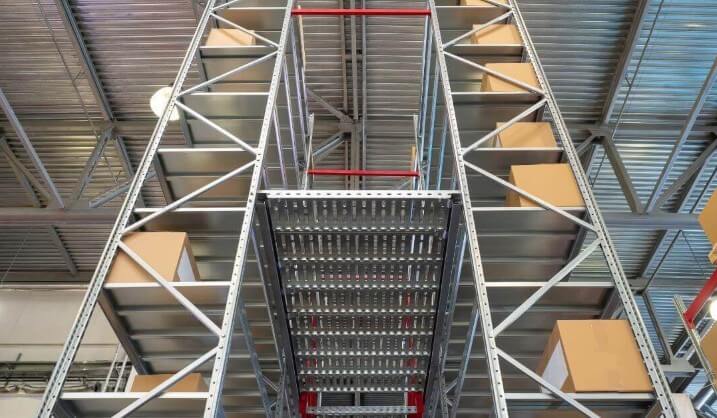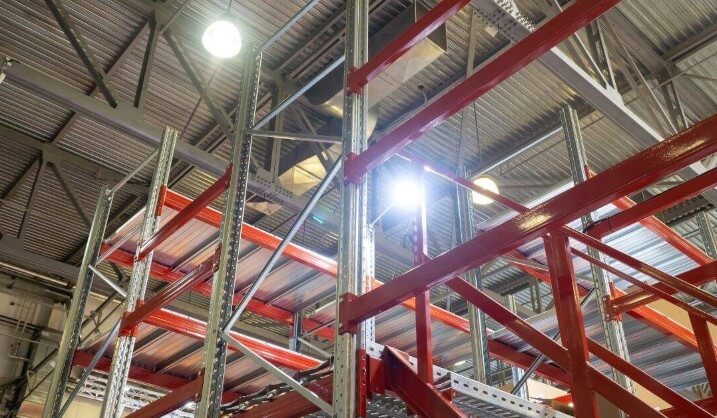What To Consider When Constructing Mezzanines

warehouse storage solutions.
Maximizing space is crucial for maintaining optimal warehouse operations. If you’re a business owner looking for ways to do just that, constructing a mezzanine in your warehouse can transform capacity without an expensive rebuild.
<br>This blog post from Pantero will guide warehouse managers and business owners through essential considerations when planning and building mezzanines. From understanding what mezzanines are to deciding on customization options and selecting the right construction company, uncover the essentials of utilizing mezzanines to boost your warehouse’s efficiency.
What Is a Mezzanine?
A mezzanine is essentially a secondary floor between the main floors of a building. Because it doesn’t extend over the entire footprint of the building, it can create a variety of configurations. Mezzanines are often semi-permanent structures that you can dismantle and move if needed.
In warehouses, mezzanines provide additional storage space, office areas, or even workstations while maintaining the integrity of the main floor below. They offer a versatile way to enhance the storage or operational areas within your warehouse without needing to expand horizontally. This flexibility makes mezzanines especially appealing for businesses looking to scale efficiently.

Benefits of Constructing a Business Mezzanine
Constructing a mezzanine can significantly increase your warehouse’s usable square footage. This creates more inventory, storage, or expanded operations without the cost of relocating or building an entirely new facility.
Mezzanines also offer flexibility; you can tailor their design to fit your business’s specific needs, whether you require additional storage, office space, or production areas. Finally, they can simplify workflow by creating designated zones within the warehouse, enhancing efficiency and safety.
Key Considerations Before Constructing a Mezzanine
Before embarking on mezzanine construction, evaluate a few critical factors to ensure the project meets your warehouse’s specific needs. These considerations will help you plan a mezzanine that enhances your operations instead of complicating them.
Safety
Safety should be the top priority when constructing a mezzanine. The design you select should incorporate all necessary safety features, such as guardrails, secure access points, and adequate lighting.
Consider how your employees will use and navigate the mezzanine and what safety protocols you’ll need to implement to protect workers. Structural integrity checks are vital to ensure the mezzanine can support static loads and dynamic loads if you plan to move heavy machinery or items onto it.
Space
Your available warehouse space will dictate the design and size of your mezzanine. Analyze the current layout of your warehouse to determine how a mezzanine will fit and function. Consider factors such as ceiling height, existing obstacles, and pathways that need to remain clear for efficient operation.
Properly planning your mezzanine’s footprint will maximize its utility and minimize disruptions to your current workflow. A well-designed mezzanine should integrate seamlessly into your existing space.

Load Capacity
Understanding the load capacity is crucial to ensure the mezzanine can safely support the intended weight. Determine what you will store or install on the mezzanine to calculate the required load-bearing capacity.
Don’t forget to consider any potential future increases in load due to business growth. Collaborate with structural engineers to ensure the mezzanine meets these specifications, as overloading can lead to structural failure and safety hazards.

Compliance with local building regulations and codes is mandatory when constructing a mezzanine. Seek professional guidance from those familiar with these regulations to avoid costly fines or reconstruction. This may include acquiring necessary permits or conducting inspections before and after installation. Regulations might cover fire safety standards, egress requirements, and load ratings. Staying informed of regulations will streamline the construction process and ensure legal compliance.
Purpose
Clearly define the primary purpose of your mezzanine. Understanding its role will guide your design decisions, whether you’ll use it for additional storage, office space, or a specialized area used for assembly lines.
Tailoring the mezzanine to its intended use ensures that it provides maximum benefit and efficiency. It also influences decisions on size, load capacity, and required amenities, such as electrical outlets or climate control.
Flooring and Customization
Selecting the right flooring is pivotal for the functionality and safety of your mezzanine. Options range from steel grating for durability to plywood for a softer surface.
Consider the activities that will take place on the mezzanine and choose flooring that accommodates those needs. You also have plenty of other options to customize your warehouse mezzanine. Whether you would benefit from integrating conveyor belts or adding shelving units, you should tailor your mezzanine to enhance your warehouse’s operations.
Tailoring Mezzanine Design to Your Warehouse
Customization and modularity are key when designing a mezzanine that fits seamlessly into your warehouse. Each warehouse has unique demands, so it’s essential to work closely with designers who understand your specific needs.
Modular designs offer flexibility and adaptability, allowing for future modifications without major overhauls. This ensures that your mezzanine remains relevant as your business evolves.
Choosing a Mezzanine Construction Company
Selecting a reputable construction company is crucial for a successful mezzanine project, as it ensures that both the design and execution meet your specific needs and industry standards. Look for companies with extensive experience in warehouse mezzanines, such as Pantero. We can help you along every step, from designing to installing your
warehouse storage solutions.
When choosing a company, evaluate their portfolio to see the types of projects they have completed, read client reviews to get an idea of their reliability and quality of service, and check their industry certifications to ensure they comply with all relevant regulations and best practices. A well-chosen partner will guide you through each step, from the initial design and planning phase to compliance checks and construction, ensuring a seamless experience and a high-quality result that meets your expectations and enhances your operational efficiency. Feel free to browse our website to learn more about our experienced team and services.



